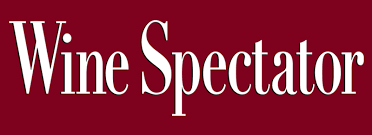Press
La Place de Bordeaux, a traditional network of wine merchants, has become a major player in the international wine market.
The announcements came from different wine regions on different continents, but the message was the same. Last week, Favia in Napa Valley and Allegrini in Valpolicella announced that some of their wines would now be sold and distributed worldwide not by local merchants but by the French négociants of La Place de Bordeaux.A remarkable transformation is underway at La Place. Dozens of foreign wines, i.e. wines not produced in Bordeaux, are now marketed by merchants who pass through La Place de Bordeaux in two annual sales campaigns, one in September and the other in March. These include such iconic wines as Bill Harlan’s Promontory from Napa, Jackson Family’s Vérité from Sonoma, Beaux Frères from Oregon, Champagne Philipponnat’s Clos des Goisses, Will Berliner’s Cloudburst and Jim Barry’s The Armagh Shiraz from Australia, and such Tuscan superwines as Bibi Graetz’s Colore, Masseto and Solaïa. This development, which began cautiously a few years ago, has accelerated. And it places Bordeaux at the world crossroads of great wines. Those involved believe that this is good for the winemakers, the consumers and La Place. “It’s a win-win-win situation. Otherwise it wouldn’t happen,” Mathieu Chadronnier, chairman of CVBG, a leading négociant, told Wine Spectator . “Being sold by some of the most respected négociants opens up The Armagh to more markets around the world and gives it credibility as a great wine,” said Sam Barry, commercial director of his family’s Australian wine company. “Australian wine is still under-represented on the global fine wine scene, so being on La Place is not just a breakthrough for The Armagh, it’s a breakthrough for good Australian wine. “Chadronnier believes this is part of a declining wine world. “The concentration of knowledge and experience that this allows is quite fascinating – the relationships it creates – and it helps to make the world of good wine ‘one’. [It’s] interesting, exciting and challenging.”
Where is this place?
Despite its name, La Place is not a specific place. It is a marketplace and distribution network of over 300 merchants who sell in markets in over 170 countries. The best châteaux in Bordeaux have never sold directly. Instead, a network of courtiers, or brokers, makes deals between château owners and négociants as futures contracts are released. The négociants distribute the wine to buyers around the world, mostly quickly and efficiently. While the top wineries have upped their marketing game in recent decades, they leave sales and distribution to La Place.
The market is resilient and agile. That’s why it has been trading wine for 800 years. This kind of longevity requires the ability to adapt to new circumstances such as wars, tariffs and pandemics, and the willingness to open up new markets, such as emerging markets in Asia, Africa and Latin America.
Until 24 years ago, La Place never sold a wine produced outside Bordeaux. The late Philippine de Rothschild of Château Mouton-Rothschild put the 1996 vintage of her Chilean wine project, Almaviva, on La Place in 1998. Not everyone thought it was a good idea. “It was unevenly accepted by the different parties,” says Diplomat Chadronnier.
It would be another six years before Opus One, Mouton’s Napa collaboration with Robert Mondavi Winery, also reached La Place. And even longer before wines with no Bordeaux connection start to be marketed.
So why now?
It’s as if attitudes have changed. Bordeaux is dynamic, open and cosmopolitan.
The hundreds of merchants who trade at La Place have their own specialities. And because La Place has always devoted some of its energy to selling rare and sought-after wines, it has a vast and complex distribution network that reaches shops, restaurants and buyers for collectors around the world. There is no other place in the world where a single wine can be sold to so many countries and sub-markets within those countries in a single day.
“Bordeaux merchants] are masters at delivering even small quantities of premium wine to many different markets, even far away, in perfect conditions,” says Vianney Gravereaux, Masseto’s sales and marketing director.
Take the last sales campaign in March. The Harlan family’s 2016 Promontory Napa Valley “sold out the day it was released to hundreds of merchants around the world,” says Jean-Quentin Prats, CEO of Joanne Rare Wines, which has been a major player in selling “foreign” wines to La Place. Prats sells over 100 non-Bordeaux wines.
It’s worth taking a moment to consider that none of this would have happened if the world of good wine had not developed over the past 50 years. While Bordeaux has been a big name for centuries, wineries from other countries and emerging regions have taken the luxury market by storm. The target consumers of these wines are the same.
“I don’t know anyone who only drinks Napa; I don’t know anyone who only drinks Bordeaux or Burgundy or Barolo or Tuscany,” says Chadronnier. “Fine wine consumers may have regions of choice, but they consume and enjoy wines from a wide variety of regions and countries. It makes sense that all these wines are distributed through the same channels.”
Charles Philipponnat was the first Champagne producer contacted by La Place and he saw the potential straight away. “It’s an extension of our policies, not a fundamental change,” explains Philipponnat, who started a few years ago to release Clos des Goisses from his house on La Place. “It allows us to reach a lot of specialist merchants with smaller quantities than a big importer would normally take and it means we reach more people who appreciate these types of wines.”
The September release of Clos des Goisses was such a success that Philipponnat decided to release his even rarer Clos des Goisses LV in the March campaign. It sold out almost immediately, Philipponnat says.
Pour les petits établissements vinicoles, La Place peut changer la donne. Depuis son vignoble de Toscane, Bibi Graetz tentait depuis plusieurs années d’entrer dans La Place, mais il n’y avait pas de route évidente. Il sentait qu’il avait poussé la distribution aussi loin qu’il le pouvait, mais qu’il avait besoin d’un modèle commercial différent pour atteindre le niveau supérieur. “J’étais seul avec une personne qui m’aidait”, a-t-il déclaré à Wine Spectator . “Nous avons réussi à très bien couvrir cinq marchés. Nous avions un total de 24 pays et 24 clients.”
Puis une mise en relation le met en contact avec les bons partenaires négociants. “Nous avons commencé à vendre nos vins sur La Place il y a cinq ans avec le millésime 2015”, explique Graetz. “Maintenant, nous avons 700 importateurs et plus de 60 pays. C’est un rêve. La Place est fascinante, très sophistiquée.”
Graetz est un bon exemple de la manière dont La Place agit comme un accélérateur pour des marques déjà fortement reconnues dans le monde du vin et auprès des connaisseurs.
« J’ai toujours été très convaincu par La Place de Bordeaux et son énorme capacité à capitaliser sur l’ampleur de la distribution alors qu’une marque a déjà une certaine notoriété », déclare Alexander Van Beek, directeur général de Château Giscours et de la super cave toscane Caiarossa . Lui et son équipe ont mis le millésime 2013 de Caiarossa sur La Place en 2015, en collaboration avec 15 négociants.
“La Place n’est pas un bâtisseur de marque. Mais cela aide vraiment à augmenter la visibilité de la marque sur les marchés”, dit-il. “La Place est forte pour capitaliser sur les énormes relations de marché qu’ils ont dans des pays où individuellement vous ne seriez pas en mesure de vendre parce que cela prendrait trop de temps et trop cher.”
It’s not just a win-win for traders and winemakers. There are also benefits for collectors, says Van Beek. “There are two big advantages to working with La Place. Firstly, it’s free market. The margins taken in distribution will be lower than with an exclusivity contract, so the end consumer will get a better deal. Secondly, La Place de Bordeaux will always offer a valuation of a specific brand in correlation with the vintage. So if you are a collector and you want a value for your wine, you will have a direct view from La Place, which is a financial marketplace.”
Bertrand Steip, president of Moët Hennessy’s Estates & Wines, producer of Ao Yun , confirms: “La Place de Bordeaux can be considered as the Wall Street of fine wines. Putting their Chinese wine on La Place “sends a clear message about our ambition to make a great wine in Ao Yun, and ensures that we can reach wine lovers around the world”.
So what does it take for a foreign wine to be accepted on La Place? Quality, history, reputation and, in many cases, rarity.
Berliner’s Cloudburst is a tiny, hands-on production from Margaret River in Australia. “Cloudburst demands my full attention and used to require me to drop my winemaking hat a few times a year to venture out to introduce it to the world,” Berliner explains. “It was a bit taxing, and I often dreamed of the time when someone else would properly represent Cloudburst so I could focus on the vines and the wines.” He started selling his wine on La Place in 2020 and says it feels natural. “In retrospect, it seems logical that it would end up on La Place – from the beginning, my goal has been to make good wine,” says Berliner.
And perhaps it made sense for Bordeaux to extend its expertise to foreign wines.
What is less clear is what the long-term ramifications will be as Bordeaux grows and consolidates distribution of the best-known fine and rare wines.
“It’s a fascinating development in Bordeaux. I think it’s part of the reinvention of Bordeaux,” says Chadronnier. “But it goes beyond business. It reinforces what makes good wine unique in terms of a sense of place and time. There is no other product than wine that has this relationship with place and time. And bringing together all these landscapes and human stories and experiences and styles and aspirations is very exciting.”



